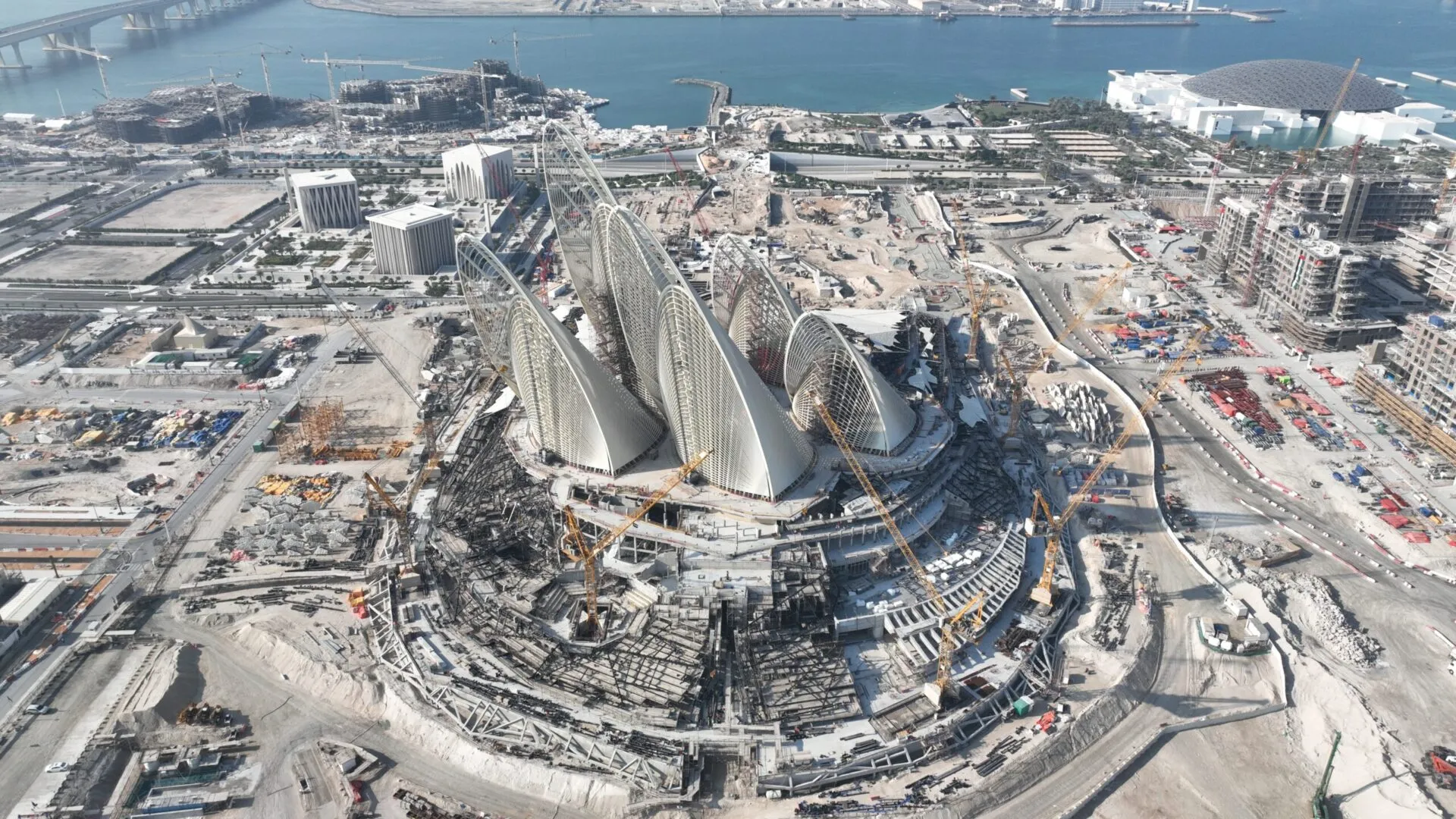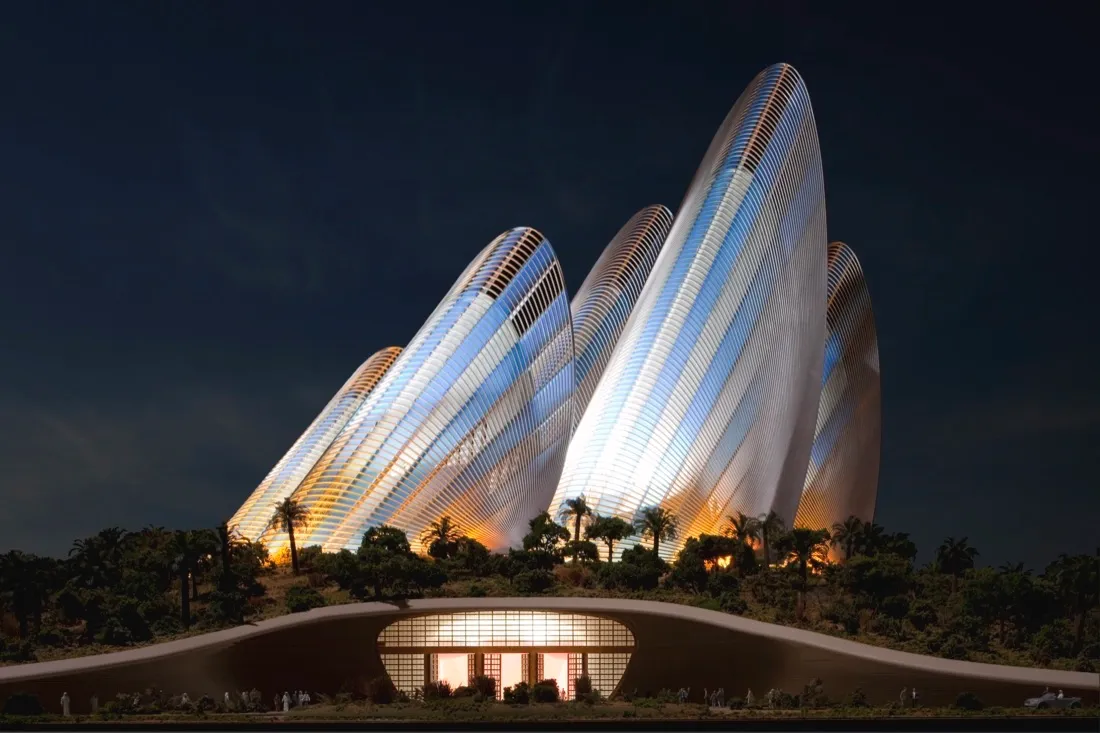Designed by a renowned British architectural firm, Foster + Partners, the Zayed National Museum in Abu Dhabi is an ongoing meaningful cultural project to celebrate the legacy of the UAE’s founding president, Sheikh Zayed bin Sultan Al Nahyan. Located on Saadiyat Island, 500 metres off Abu Dhabi, this museum will join the prominent institutions, the Louvre Abu Dhabi, the forthcoming Guggenheim Abu Dhabi, the Performing Arts Center, and the Maritime Museum.
Vision for Zayed National Museum

Conceptually unveiled in 2010, the museum’s design features five insulated stainless steel towers, each resembling the wings of a falcon, a symbolic representation of Sheikh Zayed’s affection for falconry. Ranging from 83 to 123 metres in height, they act as solar thermal chimneys offering aesthetic and functional purposes. These towers utilize the thermal stack effect, naturally ventilating the museum by drawing hot air upwards and allowing cooler air to enter through underground pipes. It illustrates the fusion of ancient wisdom, the UAE’s culture and cutting-edge technology, echoing the vision of Abu Dhabi, a city of innovation.
Architectural Design

Stepping inside, one will walk through cultural storytelling through space and time enriched with Emirati history and culture, from human life in the region to a modern thriving nation, contributing got the powerful narrative of the Zayed National Museum. It will showcase spaces for six permanent galleries and exhibitions that delve into the theme of the country landscapes, languages, and social evolution.

Outdoor arenas will accommodate performances, live displays, signifying the artistic essence and fostering international cultural exchange. Passing through the Al Masar Garden, it offers a serene space, sharing the Sheikh Zayed’s anecdote through landscapes that inspired him.
Materials and Technology

Sustainability, the latest advanced software, and cutting-edge techniques are the cornerstones of the structure. The integration of solar thermal towers not only contributes to natural cooling but also aligns with traditional Emirati architectural elements like the barjeel (wind tower). The use of underground cooling pipes and the strategic placement of glass panels ensure energy efficiency and comfort for visitors. The main museum structure, partially buried in the landscape earth mound(approx 30.7 meters high), helps to improve insulation and blends with the natural surroundings.
For those interested in exploring the advanced design method behind forms like the Zayed National Museum’s towers, consider enrolling in PAACADEMY online courses, which offer expert-led training in tools like Rhino, Grasshopper, and computational design strategies.

Entering the illuminated central lobby by the dramatic use of skylights, it forms the heart of the museum interior. Representing UAE’s cultural heritage, the interiors are crafted with high-quality finishes including carved wood, local stone, and Arabesque motifs and indigenous plants and water features blend the inside and outside spaces, responding to the UAE’s arid climate.



























Leave a comment